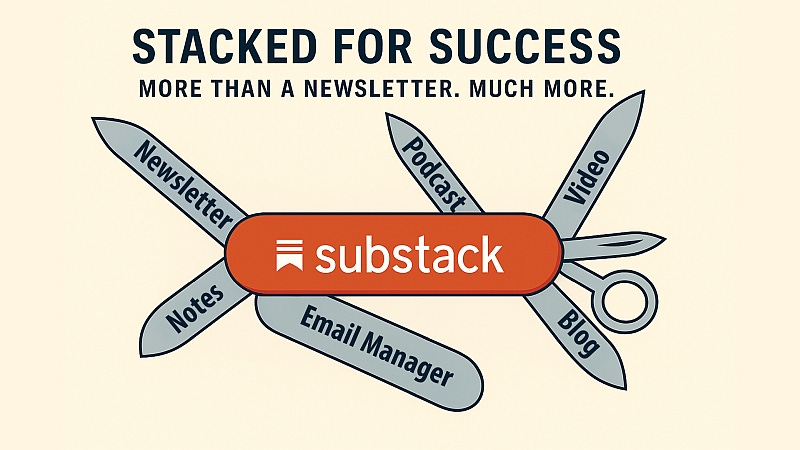Podcast Episode Details
Back to Podcast Episodes
Bonus episode: Free Substack Info Session Coming
Next Tuesday, I'm offering two separate opportunities to learn about the power of Substack.
If you're seeing this—or reading this—on Substack, there's a good chance you already use it. Not a 100% chance, of course. You can read free material on Substack without ever logging in or subscribing to anyone. But still, a pretty good chance.
Even if you're already using it, you might not realize just how much potential Substack has to help you get your message out to a world that needs to hear it.
I figured the best way to give you a taste of what we’re going to talk about in the workshop is to use Substack to show you. So, I’m making this post go out through almost every available format Substack offers. That should give you a feel for how flexible it is, and maybe help you decide whether Substack could be useful for you.
In the workshop, we’ll take a 20,000-foot view of what Substack can do. This post? Think of it as the 30,000-foot preview.
The way I like to explain Substack is with a metaphor: it’s like a Swiss Army knife, or maybe even more like a Leatherman tool. Sure, you could find a better email platform, a more powerful podcast host, or a sleeker blogging tool. But Substack’s strength is in being the Leatherman of creative communication: one solid tool that does everything well enough, and keeps it all in one place.
Take this post, for example. I used Substack’s video feature to talk to you, and you’ll find it embedded here. They are rolling out a live video feature, which I don’t have yet. It has some limitations. For instance, it only works from the mobile app, so I can’t use my usual green screen or share slides. But it’s fast, it’s personal, and if you set it up right, the video becomes part of a post that people can watch later. I will use it when it become available to me. For now, I’m recording the video and then uploading it.
I can upload a video directly into a post. I can also do an audio version instead—or a full podcast episode. Substack will distribute your podcast to Apple Podcasts, Spotify, and just about anywhere else people listen. This will become such a podcast episode.
You can embed video or audio in a regular post that is not a podcast. Or you can just write a regular text post (and if you’re reading this, that may be your preference over video or audio). Add photos if you want. Substack will email that post to your list, which makes it a great newsletter tool—which is how a lot of people first think of it. But you can also send posts only to email without publishing them online, more like a traditional mailing list.
Readers can find you through search, or they can subscribe to get emails when you publish, so it functions kind of like a blog and kind of like a newsletter. The post editor gives you a lot of formatting flexibility, though not as much as something like WordPress.
There’s even a whole ecosystem for short-form posts, like what Twitter used to be, called Notes. You can share quick ideas, links, reactions, and more. (I will post a Note a little later pointing to this post.)
And all of this? Free.
Now, if you’ve spent any time on the internet, you’ve heard the old line: “If it’s free, you’re the product.” That’s usually true—most free platforms monetize you through ads. But Substack works differently. It’s a freemium model: you can offer paid subscriptions and give your subscribers bonus content or perks. Substack takes 10% of what you earn, which means they only succeed if you do.
That’s a different incentive model from most platforms. They don’t throttle your reach. They don’t ask you to “pay to play.” In fact, it’s the opposite. They want more people to find you, subscribe to you, and support you.
Now, it’s true that once you hit a certain level of reve
Published on 4 months, 2 weeks ago